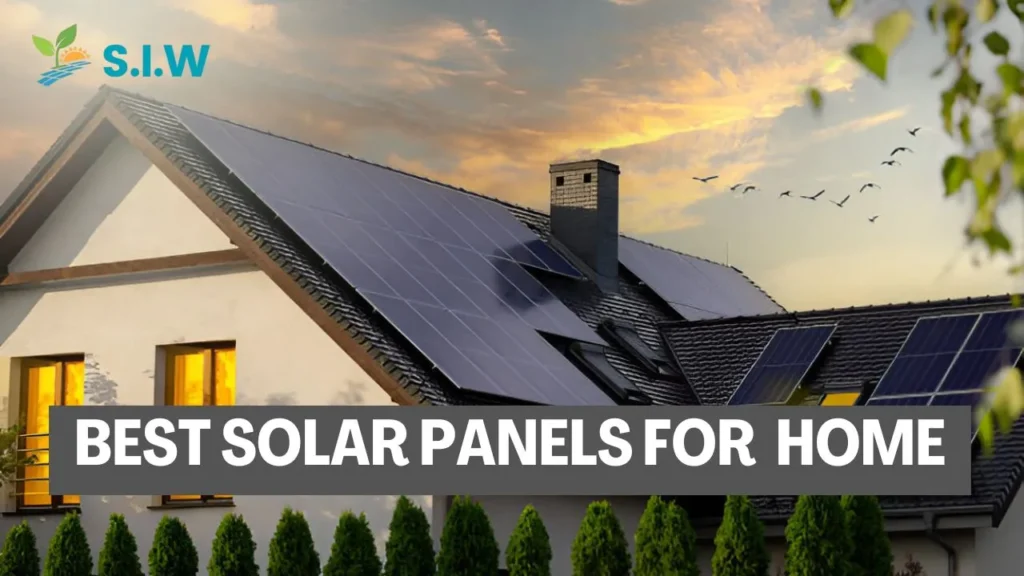Solar panels are such an interesting thing. While the initial investment is low, the long-term benefits are substantial. Choosing the best among all the options available in the market in 2024 is quite overwhelming. This article will guide you through the process. We will help you identify which solar panel is best for your home, why you should choose it, and how you should make your selection.
There are over 10,000 solar companies in the USA competing for your attention. From these, we have selected some of the best solar companies offering top-quality solar panels for your home, based on panel efficiency, warranty, and long-term performance.
Before looking at the best solar panels for your home, you should first understand which type is best to choose.
Best Types Of Solar Panels For Home
There are three types of solar panels available to be installed in the home.
-
Monocrystalline
These are considered to be among the best of all the solar panel types. They are made up of a single crystal structure, typically silicon, which provides them with high efficiency and durability. These solar panels can even perform well in low-light conditions and generally have a longer lifespan, ranging from 20 to 30 years if maintained well. Because of their quality and efficiency, which is between 15% and 22%, they are generally expensive, costing about $1 per watt for commercial systems and about $3 per watt for residential systems. What makes them more unique and appealing is their dark appearance and rounded edges.
-
Polycrystalline
This type of solar panel holds about 30% of the global solar market share, reflecting its popularity among cost-conscious consumers. These panels generally cost less to manufacture than monocrystalline solar panels, with costs ranging from $0.70 to $1.00 per watt. They are made up of multiple silicon crystals melted together, resulting in a distinct speckled blue appearance. A notable advantage they offer is their performance in higher temperatures, maintaining efficiency ranging from 15% to 20%. In terms of lifespan, polycrystalline solar panels last around 25 years, with warranties typically covering 10 to 25 years.
-
Thin Film
Thin Film solar panels are mostly used for portability as they are lightweight and flexible in design, these panels are made by depositing one or more thin layers of photovoltaic material onto a substrate, typically glass, plastic, or metal. The most common materials used in thin film technology include cadmium telluride (CdTe), amorphous silicon (a-Si), and copper indium gallium selenide (CIGS). Which differentiates them from other traditional crystalline silicon panels. Offering 10% to 12% in efficiency. They can also be integrated into windows and roofs of vehicles and small properties allowing for versatile applications. Although their efficiency is low, they excel in low-light conditions and high-temperature environments. The global market for thin-film solar panels is expected to grow significantly, expected to reach up to $7.57 billion by 2025.
Monocrystalline and Polycrystalline solar panels are mostly used in home installation. Thin film solar panels are used for installation mostly on EV or RV roofs because of their lightweightness.
Top 5 Best Solar Panel Choices For Your Home
Canadian 400 Watt
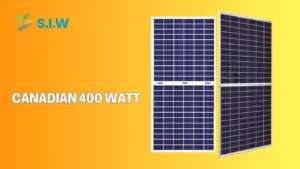
- Cost: $2.67 to $3.20 per watt
- Efficiency: 20.5%
- Warranty: 25 years
- Cell Type: Monocrystalline
- Cell Count: 108
- Temperature Coefficient: −40°C to +85°C
- Degradation Rate: 2% the first year and 0.55% from 2 to 25 years to the end of the warranty
- Resistance: Snow, Wind, and Hail
Canadian solar panels are well renowned for their efficient and long-lasting solar panels with a price little higher than the average but are a good investment as compared to other solar panels for home use.
Qcell 420 Watt
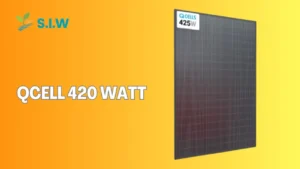
- Cost: $3.12 to $3.74 per watt
- Efficiency: 19.7%
- Warranty: 25 years of Performance & 12 years for Material
- Cell Type: Monocrystalline
- Cell Count: 144
- Temperature Coefficient: −40°C to +85°C
- Degradation Rate: 2% first year and 0.54% from 2 to end of warranty
- Resistance: Snow, Hail, Wind and Fire
They are well-known solar panel manufacturers across America, providing efficient solar solutions with high efficiency and excellent customer satisfaction through long-term services.
REC 460 Watt
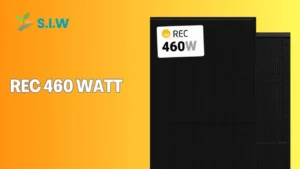
- Cost: $1.35 to $2.00 per watt
- Efficiency: 22.1%
- Warranty: 25 years of Performance & 25 years for Material
- Cell Type: Bifacial duo
- Cell Count: 88
- Temperature Coefficient: −40°C to +85°C
- Degradation Rate: 2% first year and 0.25% from 2 to end of warranty
- Resistance: Snow and Wind
They have been in the solar industry for quite some time creating efficient solar solutions with good efficiency solar panels and are providing them to the People of the USA at a very low price as compared to other choices out there.
Axitec 550 Watt
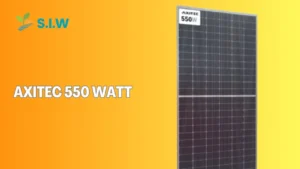
- Cost: $1.00 to $2.30 per watt
- Efficiency: 21.29
- Warranty: 15 years of Manufacturing and 25-year Performance
- Cell Type: Monocrystalline
- Cell Count: 144
- Temperature Coefficient: −40°C to +85°C
- Degradation Rate: 2% first year and 0.45% from 2 to end of warranty
- Resistance: Snow up to 5400 pa and 2400 pa for Wind
This solar panel can be the best choice for you if you want fewer solar panels but an equal amount of energy for your home at a good price. They are offering good prices with large output solar panels that are relatively light in weight. For example, this one weighs only 61.73 lb.
Zshine 370 Watt
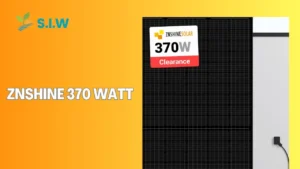
- Cost: $2.37 to $3.17 per watt
- Efficiency: 18.61%
- Warranty: 25 years of Performance & 10 years for Material
- Cell Type: Monocrystalline
- Cell Count: 72
- Temperature Coefficient: −40°C to +85°C
- Degradation Rate: 3% first year and 0.68% from 2 to end of warranty
- Resistance: Snow and Wind
These can be a good choice if you own a small home and want a lightweight solar solution for it. But, these panels are not recommended as you can buy better solar panels with more energy output for the same amount of dollars you will be paying for these.
Key Factors When Choosing Home Solar Panels
- Efficiency: When buying solar panels for your home you should look for panels between 17% to 23% of efficiency to get the best output of the solar system.
- Cost: Always prefer quality over anything. If the panel is of good quality but expensive, you should buy it. If not, then look for good quality at a lower price.
- Warranty: One of the main reasons why more and more people are going solar nowadays is because of the long-lasting lifespan of solar panels. There are multiple companies out there offering warranties ranging from 15 to 20 years, with some even offering up to 30 years of warranty.
- Material Type: It is dependent on your type of roof, but if you have a powerful roof, then monocrystalline solar panels are suitable for you. If you demand a perfect panel at a lower rate, you can stick to polycrystalline solar panels. If your roof cannot work with heavy-weight panels, then you may opt for thin-film solar panels.
- Temperature Coefficient: The temperature coefficient shows efficiency loss per degree Celsius above 25°C. For a -0.4%/°C coefficient, if the panel temperature reaches 35°C (10°C above 25°C), efficiency drops by 4%. Lower coefficients mean less efficiency loss in heat.
- Aesthetics: No one wants their house to look unattractive with oddly shaped solar panels in strange colors. So, whenever you decide to buy solar panels, make sure to consult professionals for the aesthetic appeal of your home.
- Energy Needs: Before purchasing any solar panels, you must calculate your home’s energy needs and then buy solar panels with the appropriate wattage. This way, you will be certain to get the highest return on investment as soon as possible.
- Degradation Rate: Always look for a degradation rate of 0.5% to 1% per year when buying solar panels. Those rated below 0.5% would be perfect, with an estimated retention of 87.5% after 25 years. The smaller the rate, the better they will go in the long haul.
- Performance in Shaded Areas: When buying solar panels, check for features like bypass diodes or micro inverters that improve performance in shaded areas, and ensure proper placement to minimize shade to get optimal energy output.
- Performance in Low-Lights Conditions: Most solar panels do work in low-light conditions, though not at their peak performance. When purchasing panels, ensure that you choose the best low-light performing solar panels.
How To Calculate Your Home Energy Needs
Here are the following six steps to help you calculate the energy needs for your home so you can get an overview of how many solar panels would you need to power your home.
- Gather Energy Bills: To calculate your energy needs first you have to collect your previous 12-month energy bills to determine the average monthly energy consumption in kilowatt-hours (kWh). This provides a baseline for your energy needs.
- Determine Daily Usage: Then you have to divide your total annual kWh usage by 365 to find your average daily energy consumption. This number will help you get an estimate of the size of the solar system required for your energy needs.
- Peak Sunlight Hours: Research the average daily peak sunlight hours in your location, as it will influence the energy production and efficiency of the solar panels.
- Calculate Solar System Size: That’s one of the most important steps in which you put all of your above efforts into a formula to get the system size:
System Size (KW) = Daily Energy Needs (kWh) / Peak Sunlight Hours (hrs)
It will give you the exact system size based on your daily energy consumption and the sunlight your location receives on average.
- Account For System Losses: Always remember to account for an additional 20% for energy losses due to inefficiencies in the system (such as inverter losses, shading, and temperature effects) so that you won’t fall short on energy when needed.
- Consult A Professional: After completing all the above steps in the last you can consider consulting a solar energy professional for a comprehensive assessment and tailored recommendations based on your specific circumstances, including roof space and orientation. Or else if you want to you can do it all by yourself.
Cost Of Solar Panels For Homes & Businesses
Curious about the cost of solar panels? The cost varies differently according to the panel material and the size of the system whether it’s a commercial or a residential solar system.
Residential Solar System Cost
These systems are smaller in size than commercial ones, which makes them less costly but increases the cost of panels per watt. On average, the watt price ranges from $2.00 to $3.00 before incentives. In America, for example, a 5-kilowatt system for an average home would cost approximately $15,000 before incentives. If you’re looking for the best solar companies in California, they can help you assess the costs and find available incentives to reduce the overall expense.
Commercial Solar System Cost
Commercial solar panel systems are typically larger in size than residential ones, making them more cost-effective per watt. However, the initial investment is higher, with average watt prices ranging from $1.50 to $2.50 before incentives. For example, a 100-kilowatt commercial system in America could cost approximately $250,000 before incentives.
Home Solar Panels Incentives and Rebates
- Federal Tax Incentive: This incentive is available all around the USA covering 30% of the total solar panel installation cost (Through 2032).
- State Tax Credits: Some states offer additional tax credits or exemptions.
- Property Tax Exemptions: Certain states exempt solar panels from property taxes.
- Sales Tax Exemptions: Some states exempt solar equipment from sales tax.
- Utility Rebates: Many utilities offer rebates for solar panel installation.
- Net Metering: Allows you to offset your energy costs with solar power.
- Solar Renewable Energy Certificates (SRECs): These are tradable certificates representing the environmental benefits of solar energy generation. They allow businesses and individuals to offset their carbon footprint by purchasing these certificates, supporting the growth of renewable energy. Can be sold for additional income.
- Low-Income Incentives: Some programs are offering additional assistance for low-income households.
- Community Solar Programs: These programs are similar to the PPA and solar leases, but in these programs, you get a solar system on lease from the community you are living in.
Solar Panels For Home Installation Process
- Assessment: The solar panel installation team first evaluates the energy needs of your home, roof suitability, and local incentives you can be eligible for.
- Design: A solar installer will design a system tailored to your specific requirements.
- Permits: Solar installers then obtain necessary permits for solar panel installation from local authorities.
- Installation: This process includes mounting panels on your roof, connecting them to inverters, and integrating the system into your home’s electrical grid. To take the first step towards energy independence, it’s a good idea to get a quote from a reliable solar provider to understand the costs and savings involved.
- Inspection: A local inspector verifies the system’s safety and compliance.
- Activation: Your utility company connects your system to the grid if it’s an on-grid solar system.
- Monitoring: Some companies provide monitoring software that enables you to track the amount of energy being generated by your system and determine if it is performing at its peak.
FAQs
- What are the different types of solar panels?
- Monocrystalline: Most efficient, highest-quality, but also most expensive.
- Polycrystalline: Less efficient than monocrystalline, but more cost-effective.
- Thin-film: Flexible, lightweight, and can be integrated into various surfaces, but generally less efficient.
- How long do home solar panels last, and what affects their lifespan?
If solar panels are maintained well they can last up to 20 – 30 years or more. What affect their lifetime is their exposure to harsh weather conditions, cleaning practices, and installation quality.
- What type of solar panels are best for residential homes?
The best solar panels for homes are dependent on the customer’s need, but the recommended one is monocrystalline solar panels because of their high efficiency and durability.
- How many solar panels do I need for my home?
On average, most homes need 20 to 30 panels to meet their electricity needs. A professional solar assessment can give you a more accurate estimate based on your location and energy usage.
- What are the potential savings from solar panels, and how can I calculate them?
Savings can be significant, especially in areas with high electricity rates. You can use online calculators or consult with a solar installer to estimate your potential savings.
- What are common technical questions about solar panels, and what are the answers?
- Efficiency: Typically ranges from 15% to 22% for monocrystalline and polycrystalline panels.
- On-grid vs. Off-grid: On-grid systems are connected to the electrical grid, while off-grid systems operate independently.
- Net metering: This allows you to offset your electricity costs by sending excess solar power back to the grid for credits.
- What is the Highest Solar Panel Efficiency Recorded?
The highest recorded solar panel efficiency is 47.6%, achieved by the National Renewable Energy Laboratory (NREL) using a six-junction III-V cell under concentrated light. This technology is not commercially available and is mainly used for space applications.

